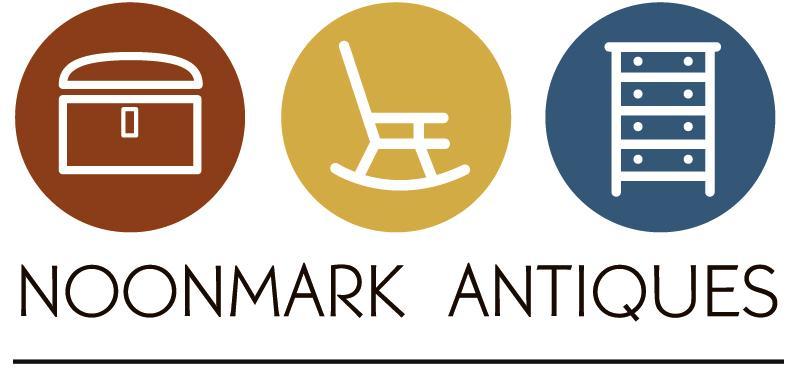Buying Antiques: How to Evaluate a Windsor Chair
For many antiques collectors, the hunt is part of the reward. For those new to the world of old objects, the process can be baffling if not intimidating. Should you go to a dealer? If so, who? Should you try going straight to an auction and cut out the middle-man? How do you know if you’re bidding on a good piece? So many questions. How do you avoid making costly mistakes while you learn?
No question about it, there’s a lot to learn. Once you get started, you’ll realize that you have learned a lot since your first find. But, you can avoid some costly mistakes by following some reliable guidelines. This series of articles will help you navigate the hunt with greater success. If you want to make sure you don’t miss any articles in this series, you can always subscribe to RSS feeds at our blog at www.NoonmarkAntiques.com/blog.
This first article will take you through the process if evaluating a piece of furniture at a dealer’s shop. We’ll show you a few simple steps that will help you begin vetting things like a pro. In this case, we’re looking at a Windsor chair.
1. Thin slicing: what’s your first impression?

My first impression was that this chair merits a closer look. Why? The form was good. It’s a sackback Windsor. The legs are nicely splayed. The seat is wide and shaped by carving. The legs are a little bulbous, but not as much as the best chairs (a slight negative). The surface has lots of wear with the typical 2nd or 3rd coat of black paint, much of it worn off. This tells me it hasn’t had much meddling with the surface in a long time (a good thing). Now let’s get closer.
2. Take a closer look:

I’m really looking at the paint history now. What I want to know: is there any original paint underneath the later coats? I can see the bare wood. That’s the starting point of the history. But is it bare due to stripping or natural wear? Stripping is bad—a deal-killer in most cases. But here I see that the bare wood is due to wear. Remember, these chairs were used outdoors. They saw all kinds of weather that caused paint loss. Original colors were usually green, red or blue. Black was popular in the later 19th century. Here, I see red. I’m inclined to think that this is the original paint. Do I see evidence of red everywhere? I sure do. Let’s look underneath the seat. That should show more red:

Bingo! This is looking good. The black is on top of the red around the legs.
3. Look for structural damage.
In the case of Windsors, look at the bow or crest—the fragile bent piece around the back. Also check out the arms carefully. Anywhere the spindles penetrate is a potential weak spot that can break:

Sure enough, I see a break on the top that someone repaired (not so well, either). So that’s a negative. I don’t see any other structural problems—except: seat height. Have the legs been cut? Let’s measure the seat height:
It’s over 17”, which means the legs are uncut. This is good news. Often, earlier owners cut the legs so sitters could fit under the aprons of tables. These chairs were meant for casual outdoor use, not as dining chairs. But cut legs are a deal-breaker with Windsor collectors.
So, how does this chair fare with this evaluation? Well, it has a pretty serious condition problem with the break in the bow back. That will require some costly conservation work, and it won’t be original. Original, perfect condition is always best—which is why such chairs command the highest prices. On the other hand, this chair has some promising paint history. It doesn’t appear to be stripped. With some costly conservation effort, the later black paint could come off, leaving just the red and bare wood. The seat height is good. The form is only OK—the very best chairs have exaggerated bulbous legs and more dramatically carved seats. The very, very best chairs have the maker’s stamp on the bottom of the seat.
This chair is a middle-quality chair with a structural repair problem, good paint history and thus merits consideration.
Next: How to buy an oil painting

